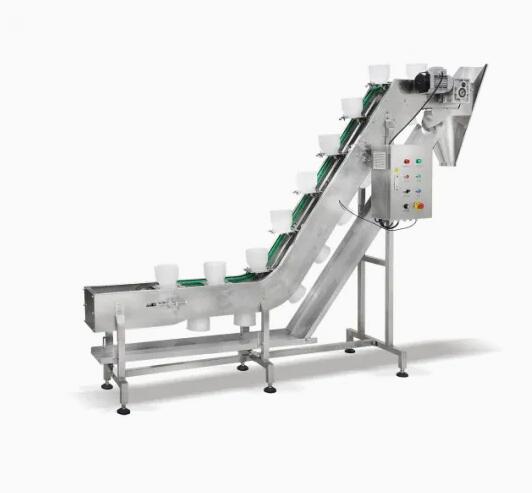Exploring the Different Packaging Materials Used in Packing Machinery
2024-09-07
In today’s fast-paced manufacturing world, packaging machinery plays a critical role in ensuring that products are efficiently and securely packed for distribution. The success of these operations heavily depends on the packaging materials used, as they need to meet the requirements of both the machinery and the products being packed. In this blog, we’ll explore some of the most common packaging materials used in packing machinery and how they suit various industries.
1. Plastic Films: Versatility and Efficiency
Plastic films are one of the most commonly used materials in packaging machinery, particularly for items that need to be wrapped, sealed, or shrink-wrapped.
- Polyethylene (PE): Known for its flexibility and durability, PE is often used in shrink-wrapping and stretch-wrapping applications. This material is popular for packaging bulk products, pallets, and food items.
- Polypropylene (PP): PP is lightweight and has excellent clarity, making it ideal for food packaging, especially for items that need a clear view for consumers.
- Polyvinyl Chloride (PVC): Although less common due to environmental concerns, PVC is used in some shrink-wrap applications where extra durability and tamper-resistance are required.
Packing machinery that uses plastic films often includes systems like form-fill-seal machines, shrink tunnels, and wrapping machines, all of which are optimized for flexible and stretchable packaging solutions.
2. Paper and Cardboard: Eco-Friendly and Recyclable
Paper-based materials, including paper wraps and cardboard, are increasingly being used in packaging due to their sustainability. They are suitable for many industries, especially where eco-friendliness is a priority.
- Corrugated Cardboard: Known for its strength and cushioning properties, corrugated cardboard is commonly used in boxes and cartons. Packaging machinery for this material often includes case erectors, case sealers, and carton folding machines.
- Kraft Paper: Made from wood pulp, kraft paper is strong and highly recyclable. It is often used in bags, envelopes, and protective wraps. Kraft paper works well in packaging machinery designed for bagging products like grains, flour, and other dry goods.
In industries focused on sustainability, paper and cardboard have emerged as key materials, especially with packaging machinery that’s equipped for automated cutting, folding, and sealing.
3. Aluminum Foil: Barrier Protection
Aluminum foil is a valuable packaging material in industries like food, pharmaceuticals, and cosmetics due to its excellent barrier properties against moisture, light, and oxygen.
- Food Packaging: In the food industry, aluminum foil is used for packing perishable items such as cheese, snacks, and ready-to-eat meals. It helps in preserving the freshness of products while preventing contamination.
- Pharmaceuticals: For medicines and sensitive products, aluminum foil packaging ensures extended shelf life by protecting the contents from environmental factors. This material is often used in blister packs, with packing machinery like form-fill-seal machines and heat sealers ensuring a tight, secure seal.
4. Glass and Metal Containers: Durability and Longevity
Although less commonly used in automated packaging machinery compared to flexible materials, glass and metal containers are still widely employed in industries that need robust packaging solutions.
- Glass Jars and Bottles: For products like sauces, jams, beverages, and cosmetic items, glass packaging provides durability and an aesthetic appeal. Machinery like bottling lines and jar-filling machines handle glass packaging efficiently.
- Metal Cans and Tins: Metal containers are popular in food packaging, particularly for products like canned vegetables, soups, and beverages. Automated packaging machinery for metal containers includes can sealers and labeling machines.
5. Biodegradable and Compostable Materials: The Future of Packaging
As sustainability becomes a global concern, more companies are shifting toward biodegradable and compostable packaging materials. These materials are designed to reduce the environmental impact of packaging waste.
- PLA (Polylactic Acid): Made from renewable resources such as corn starch, PLA is compostable and is used in packaging products like containers, cups, and films. Packaging machinery for PLA often includes vacuum sealing, thermoforming, and form-fill-seal systems.
- Starch-Based Plastics: Derived from starch, these biodegradable materials are increasingly used in flexible packaging. Packaging machinery designed for these materials functions similarly to machines used for plastic films, but with modifications for handling biodegradable properties.
Conclusion
The packaging material selected for any operation depends on the type of product, its shelf life requirements, and environmental considerations. From flexible plastic films and durable glass containers to eco-friendly paper and compostable alternatives, modern packing machinery is designed to handle a wide variety of materials efficiently. By understanding the unique properties of these packaging materials, manufacturers can choose the best option to enhance product protection, sustainability, and consumer appeal.



